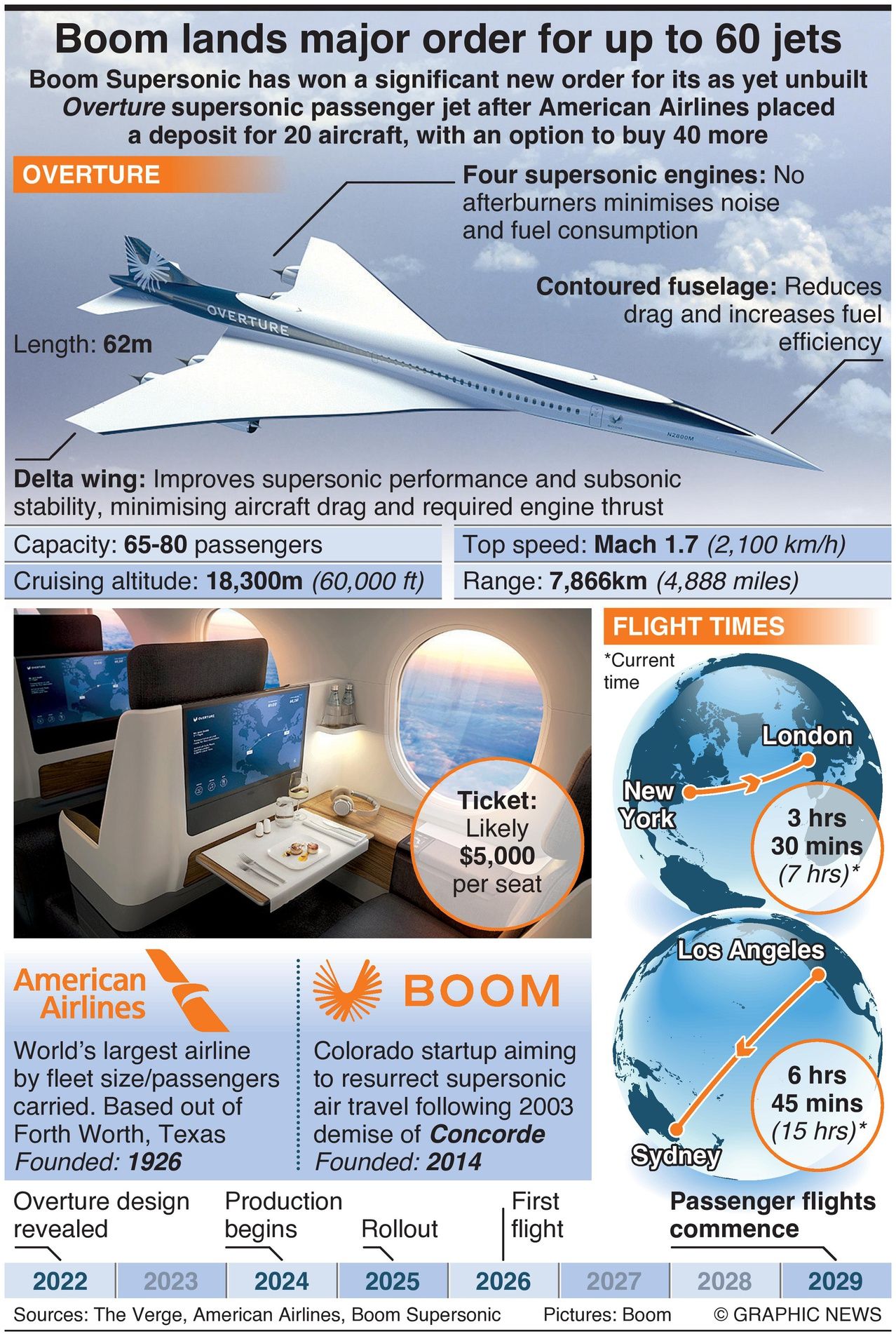
American Airlines says it is poised to own the world’s largest fleet of supersonic passenger aircraft after placing a deposit with Boom for 20 of its Overture jets – with an option to secure a further 40 aircraft, subject to safety testing.
The world’s largest airline is the second major investor in the Overture after United Airlines placed an order for 15 jets last year, with an option for 35 more. Boom also has a deal in place with Virgin Atlantic.
The Overture is the brainchild of 2014 Colorado-based startup Boom Supersonic, which is focused on resurrecting commercial supersonic air travel after the demise of Concorde in 2003.
If the Overture passes safety inspections, the plan is for them to be rolled out in 2025, fly in 2026, and carry passengers by 2029.
Boom claims the Overture will travel from New York to London in just 3.5 hours (conventional passenger jets take 7 hours) or Los Angeles to Sydney in 6 hours 45 minutes (normally a 15-hour trip).
The futuristic aircraft will be 62 meters long, have a cruising altitude of 18,300 meters (60,000 feet), be able to fly at Mach 1.7 (2,100 km/h), and have a range of 7,866km (4,888 miles). It will run on 100 percent sustainable aviation fuel – the makers claiming it will be “net-zero carbon” efficient.
It’s expected that tickets could cost as much as $5,000 per seat, although American Airlines hasn’t revealed any information about pricing yet.
Boom’s prototype XB-1 demonstrator aircraft is set to begin test flights later this year, featuring new technologies to muffle the sound of supersonic jet engines breaking the sound barrier.









